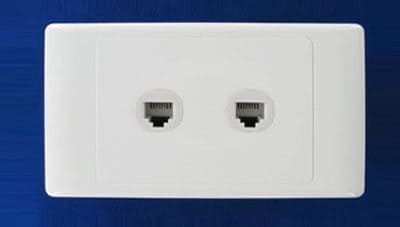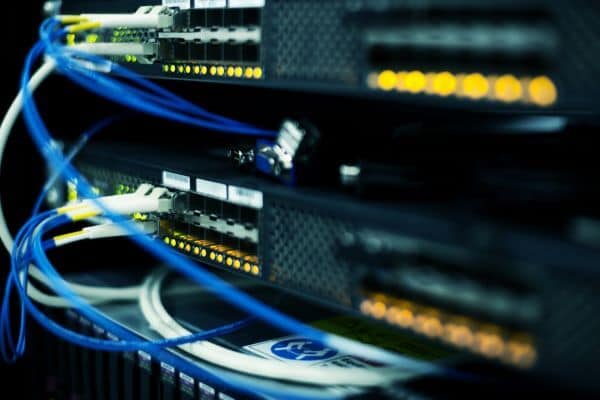The Importance of Data Point Installation in Today's Digital Landscape
As technology continues to advance, businesses are increasingly relying on digital solutions to streamline their operations and improve their bottom line. One crucial aspect of this digital transformation is the installation of data points. Data points are essential for collecting and analyzing data, which is vital for making informed decisions and gaining a competitive edge. In this article, I will explore the importance of data point installation in today’s digital landscape and discuss the benefits, types, and installation process of data points, as well as common mistakes to avoid and maintenance and troubleshooting tips.
Introduction to Data Points
What Is Data Point Installation?
Data point installation involves the placement and configuration of data point devices to collect and transmit data. The installation process can vary depending on the type of data point and the specific needs of the business. Factors such as the location of the data point, the type of data being collected, and the level of integration with other systems must be considered when installing data points.
The Importance of Data Point Installation in Today's Digital Landscape
In today’s digital landscape, data is king. Every business generates data, and harnessing that data can provide a significant competitive advantage. Data point installation allows businesses to collect and analyze data in real-time, providing valuable insights into their operations. This information can be used to optimize processes, reduce costs, and improve customer satisfaction.
Data point installation is also essential for meeting regulatory requirements. Many industries are subject to strict regulations governing data collection and storage. Data point installation ensures that businesses are collecting data in compliance with these regulations.
Data Point Installation & Maintenance
Benefits of Data Point Installation
Improved Efficiency
Planned and efficient networking creates and environment of reliability. We've seen businesses bring down an entire network when trying to move a workstation. With a neat networking system and proper documentation this never happens.
Better Decision Making
A functioning and reliable data network allows businesses to get on with their core functions. Being able to reply on their data network means thet can plan and grown by with moniroting and systemizing their processes. All data starts with good data networks.
Increased Flexibility
Network reliability allows businesses to collect data from a variety of sources, including sensors, machines, and other systems. This flexibility allows businesses to adapt to changing environments and requirements quickly.
Cost Savings
When your network is planned and documented, you'll reduce downtime that is caused by unreliable networking. You can plan and grow your business based on knowing that all your data points are fully functioning as expected.
Types of Data Point Installations
There are several types of data point installations, including:
Wired Data Points
Wired data points are devices that are connected to a central location via a wired connection. A wired connected is always your most reliable connection to the network.
Wireless Data Points
Wireless data points are wired data points with a wireless node on them. For instance, a Unifi In-Wall access point will have a data point, a wifi access point and a POE pass-through all in the one data point.
Standalone Data Points
Standalone data points are devices that are not connected to a central location. They are typically used for monitoring a single location or process.
Integrated Data Points
Integrated data points are devices that are integrated with other systems, such as SCADA or MES systems. They provide a more comprehensive view of operations and allow for more advanced analysis.
Data Point Or Network Installation
How to Choose the Right Data Point Installation for Your Business
Choosing the right data point installation for your business can be challenging. Factors such as the type of data being collected, the location of the data point, and the level of integration with other systems must be considered. Here are some tips to help you choose the right data point installation for your business:
Identify Your Needs
Before choosing a data point installation, you must identify your business’s specific needs. Consider factors such as the type of data being collected, the location of the data point, and the level of integration with other systems. If in doubt, talk to us about solutions.
Consider Your Budget
Data point installations can vary in cost, so it’s essential to consider your budget when choosing a solution. Remember to think about future proofing your project so you’ve got enough points when your company grows.
Evaluate Integration Requirements
The Process of Installing Data Points
The process of installing data points can vary depending on the type of data point and the specific needs of the business. However, there are some general steps that are typically followed:
Step 1: Identify the network set-up
The first step in installing data points is to identify the location where the data will be collected. If you have a new site, you’ll want to have a central comms cabinet to which everything connects to. This may also have a server in it, which will have fans that make it a bit too noisy for shared office spaces. This may involve a site visit to ensure that the location is suitable for data point installation. It’s better to talk to us before starting a new project to avoid making simple errors. We’ll help you plan your network.
If you’re just adding an extra comms point then the solution may be straight forward.
Step 2: Cabling
We’ll run the cable through from the data points to the central comms box. They’ll be patched into a patch panel. The comms box has to be big enough to accommodate all your IT needs. Talk to your IT provider for their requirements so we can install a box with enough space for such things as switches, routers, ISDN boxes, VOIP box, NAS storage and servers.
Step 3: Complete the System
When a system is properly documented, labelled and installed, it’s now an easy job for your other providers (eg IT) to connect the system. All data points are easily patched into a switch to activate them. Numbered data points ensure you know exactly which points are active for which purposes (ie which ones are data and which are for phone).
In the video below they do a pretty good job of showing you how to run cables while explaining some of the technical issues and how to resolve them. We’re pleasantly gratified by the planned and neat way he runs his cables and his knowledge of where and why these cables should be run. His also finishes them off very nicely. Remember that the US and Australia have different requirements for network installations. In Australia you must have qualified installers for all network installations.
Common Mistakes to Avoid When Installing Data Points
Data point installation can be complex, and there are several common mistakes that businesses should avoid:
Poor Planning
One of the most common mistakes when installing data points is poor planning. It’s essential to identify your business’s specific needs, budget, and integration requirements before choosing a solution. You should also plan some redundancy. We’ve too often seen companies want an extra data point in a completed office space where recent data points were already installed. It would have been far more efficient to have done it the first time through.
Lack of Technical Expertise
Data point installation requires technical expertise, and businesses should ensure have qualified and experience contractors (eg us) complete the work. Crosstalk, security issues and reliability issues can be avoided with correctly installed networking.
Inadequate Testing
Testing is crucial when installing data points, and businesses should ensure that the system is thoroughly tested before going live. It may surprise you to know we’re sometimes called out to fix another company’s network installation. Often it’s just an issue with a patch panel not properly patches in, something that could have been avoided if it was tested during installation.
Maintenance and Troubleshooting of Data Points

Regular maintenance and troubleshooting are essential for ensuring that data points are collecting and transmitting data correctly. Here are some tips for maintaining and troubleshooting data points:
Regular Maintenance
Regular maintenance can help prevent issues with data point installations. This may involve cleaning devices, replacing batteries, or updating firmware.
Troubleshooting
If issues do arise, it’s essential to troubleshoot the system to identify and resolve the problem. This may involve checking communication protocols, testing the system, or replacing faulty hardware.
The Future of Data Point Installation
As technology continues to advance, the future of data point installation looks bright. Advances in wireless communication, cloud computing, and artificial intelligence are making data collection and analysis more accessible and more powerful. Businesses that embrace these technologies and invest in data point installation can gain a significant competitive advantage.
Conclusion
Data point installation is essential for businesses that want to stay competitive in today’s digital landscape. It allows businesses to collect and analyze data, providing valuable insights into their operations. By choosing the right data point installation, following the installation process, avoiding common mistakes, and maintaining and troubleshooting the system, businesses can harness the power of data to optimize processes, reduce costs, and improve customer satisfaction.






